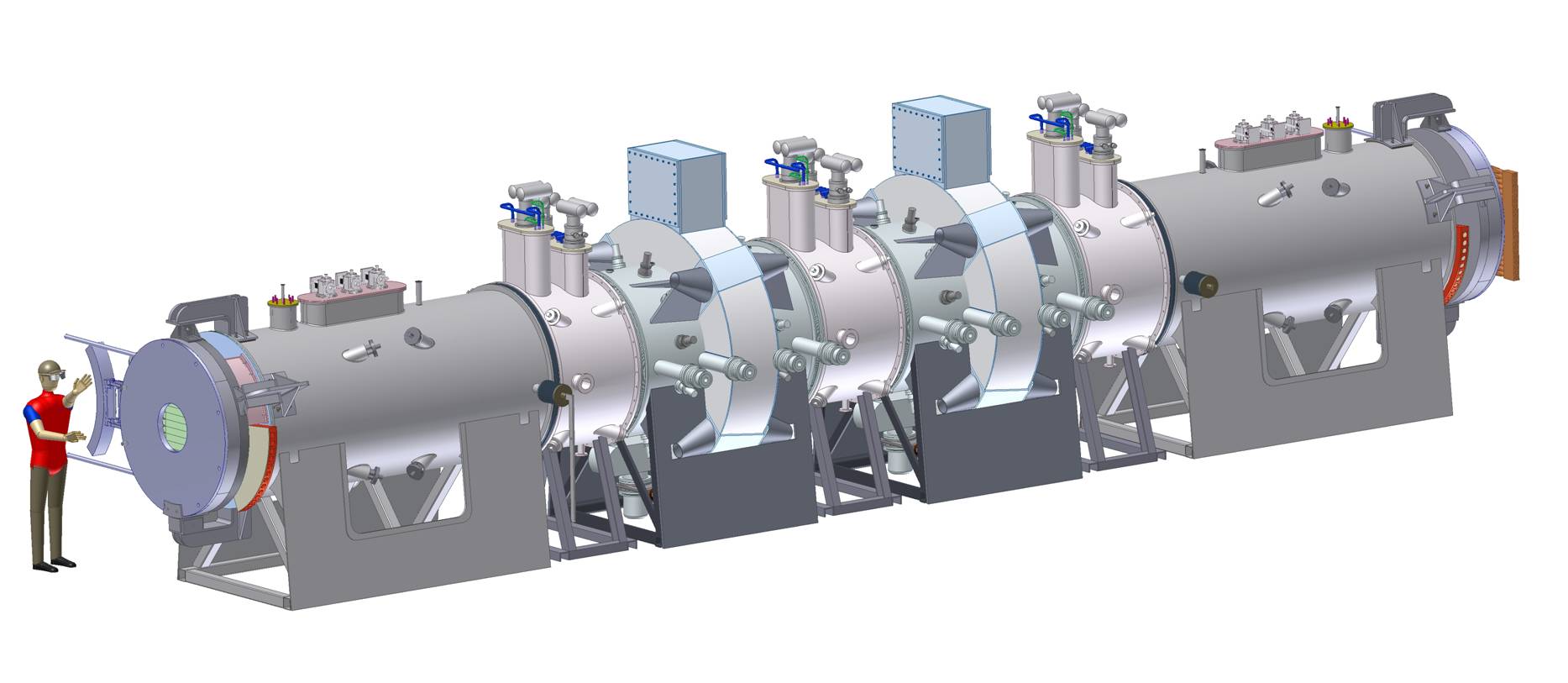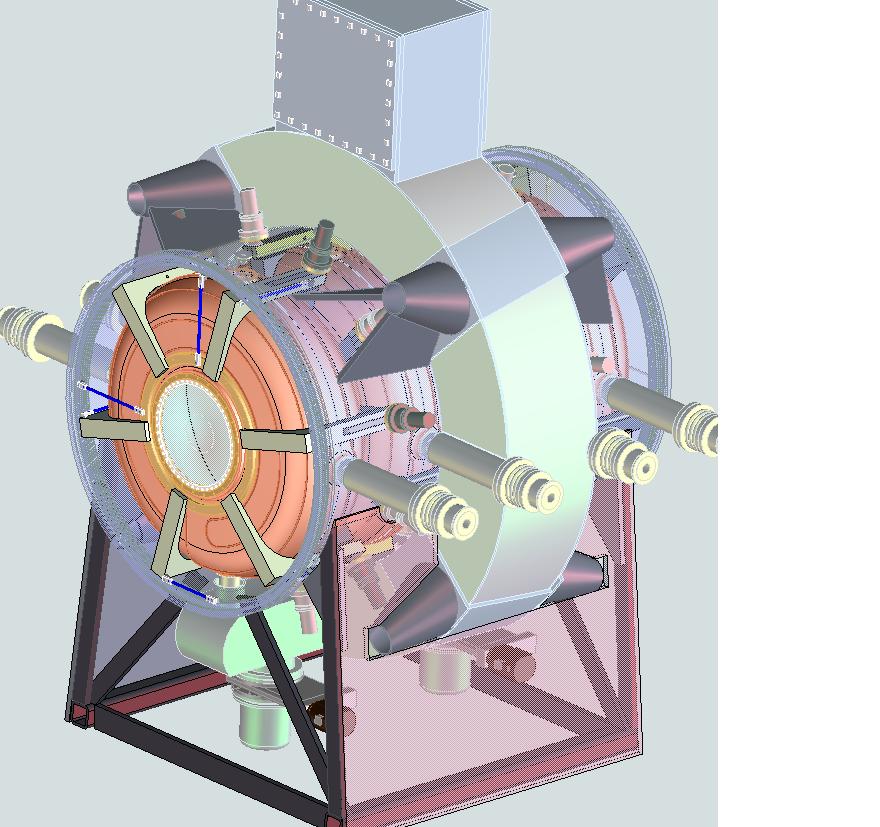Intense Muon Beam R&D
Background
Because muons are unstable, such facilities offer many unique and exciting technical challenges. At LBNL's Center for Beam Physics (CBP), we are participating in the investigation of the physics and technology issues critical for the development of both neutrino factories based on muon storage rings and muon colliders. We have core expertise in many physics and engineering areas central to muon-based accelerator research, including the engineering and design of superconducting and conventional magnets, RF and vacuum systems, the design of ring lattices, particle tracking and dynamic aperture calculations, and the analysis of coherent instabilities.
CBP participation in R&D for a high intensity Neutrino Factory and, potentially, a future Muon Collider is carried out under the general auspices of the U.S. Neutrino Factory and Muon Collider Collaboration (NFMCC). Supported primarily by the U.S. Department of Energy, the NFMCC manages a significant program in muon-beam R&D. LBNL, along with BNL and FNAL, is one of three sponsoring laboratories of the NFMCC, and serves as lead laboratory for this effort. The NFMCC Project Manager and an Associate Spokesperson are provided by CBP, and we provide three scientists to serve on the NFMCC Executive Board and two scientists to serve on the NFMCC Technical Board. NSF has also become interested in the possibility of a Neutrino Factory and has been an active participant in the NFMCC and (see below) in the international Muon Ionization Cooling Experiment (MICE), initially via Cornell University and now via IIT.
LBNL is taking a substantial role in MICE. This experiment, sited at Rutherford Appleton Laboratory in the UK, has the following aims:
- to show that one can design, engineer and build a section of cooling channel capable of giving the desired performance for a neutrino factory;
- to place it in a beam and measure its performance, i.e., experimentally validate our ability to simulate precisely the passage of muons confined within a periodic lattice as they pass through liquid hydrogen absorbers and RF cavities.
The CBP role in MICE involves designing and fabricating the two spectrometer solenoids (see Fig. 1) used for emittance measurements, and providing a pair of RF coupling-coil (RFCC) modules (see Figs. 1 and 2), each comprising four 201-MHz RF cavities within the bore of a 1.5-m diameter solenoid. The coupling coils are being designed and fabricated, under our supervision, by our collaborators at the Institute of Cryogenics and Superconductivity Technology (ICST) in the Harbin Institute of Technology (HIT) in China.
Fig. 1.: The MICE cooling channel. Spectrometer solenoids upstream and downstream house scintillating fiber tracker detectors to measure emittance before and after the cooling channel. Between the two spectrometers is one full cell of a representative cooling channel, comprising three focus coil modules housing liquid-hydrogen absorbers and two RF coupling-coil (RFCC) modules.Fig. 2.: CAD model of RFCC module for MICE.
Go back to:
AFRD home CBP home Overview TopContinue to:
Scientific Motivation



